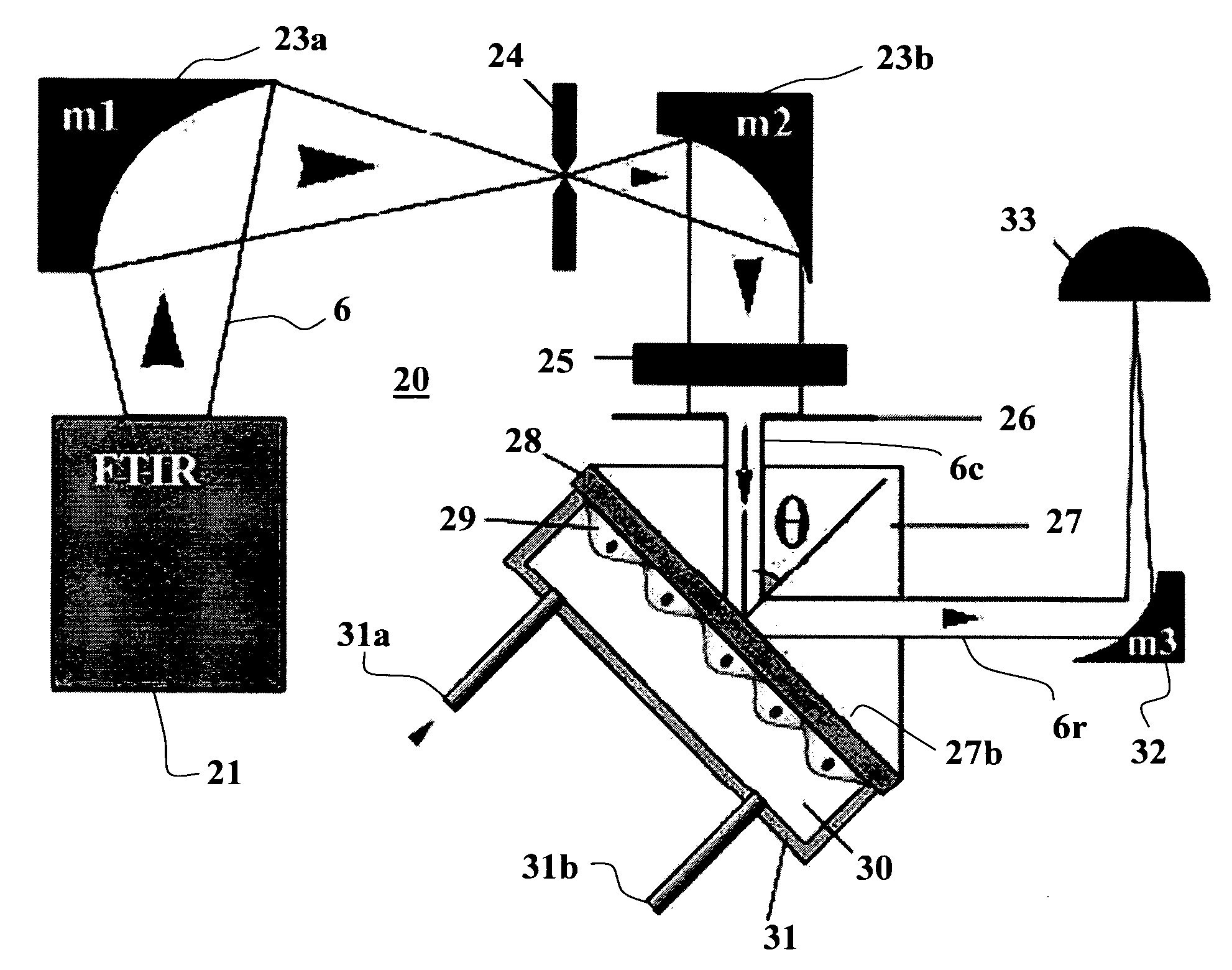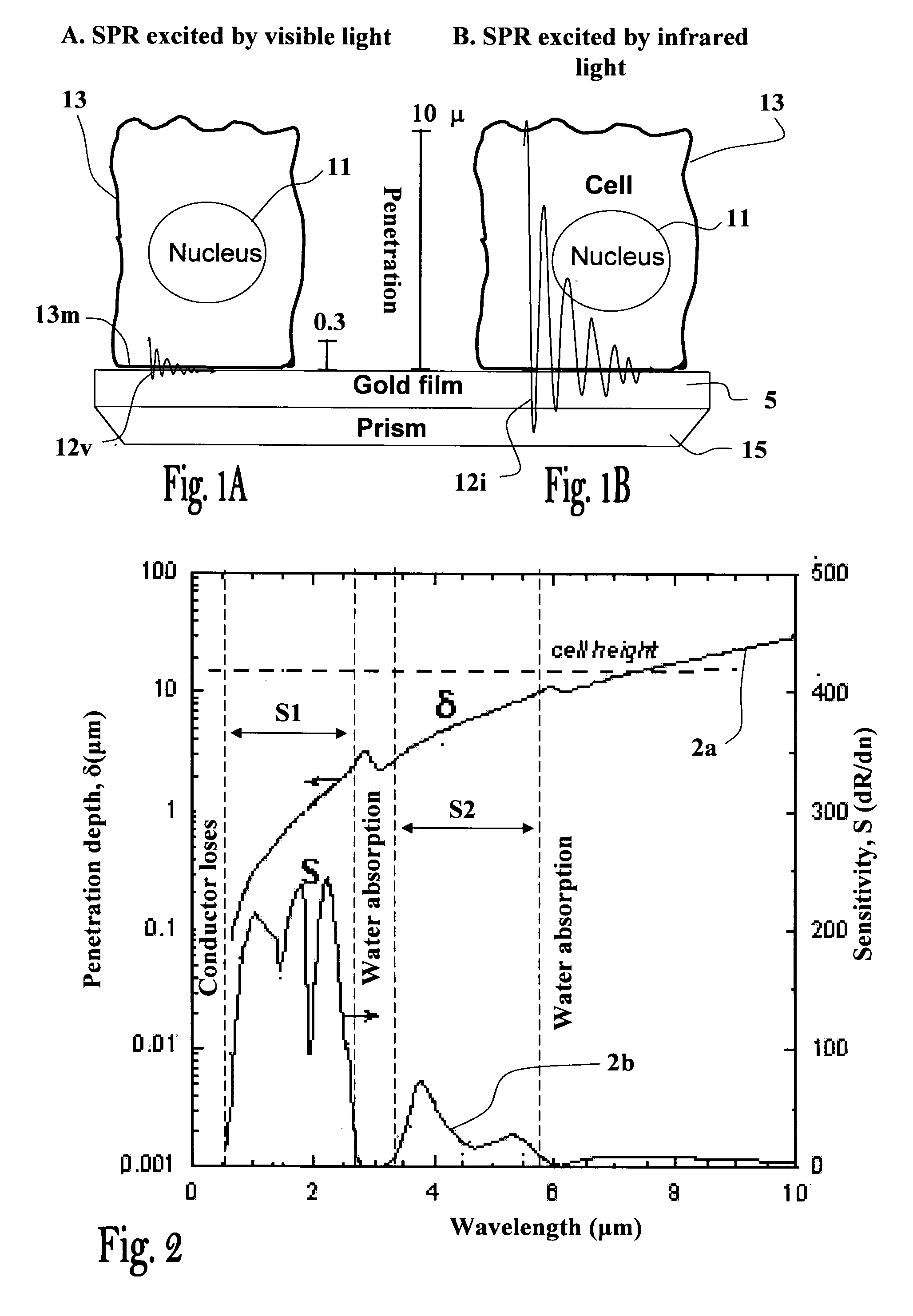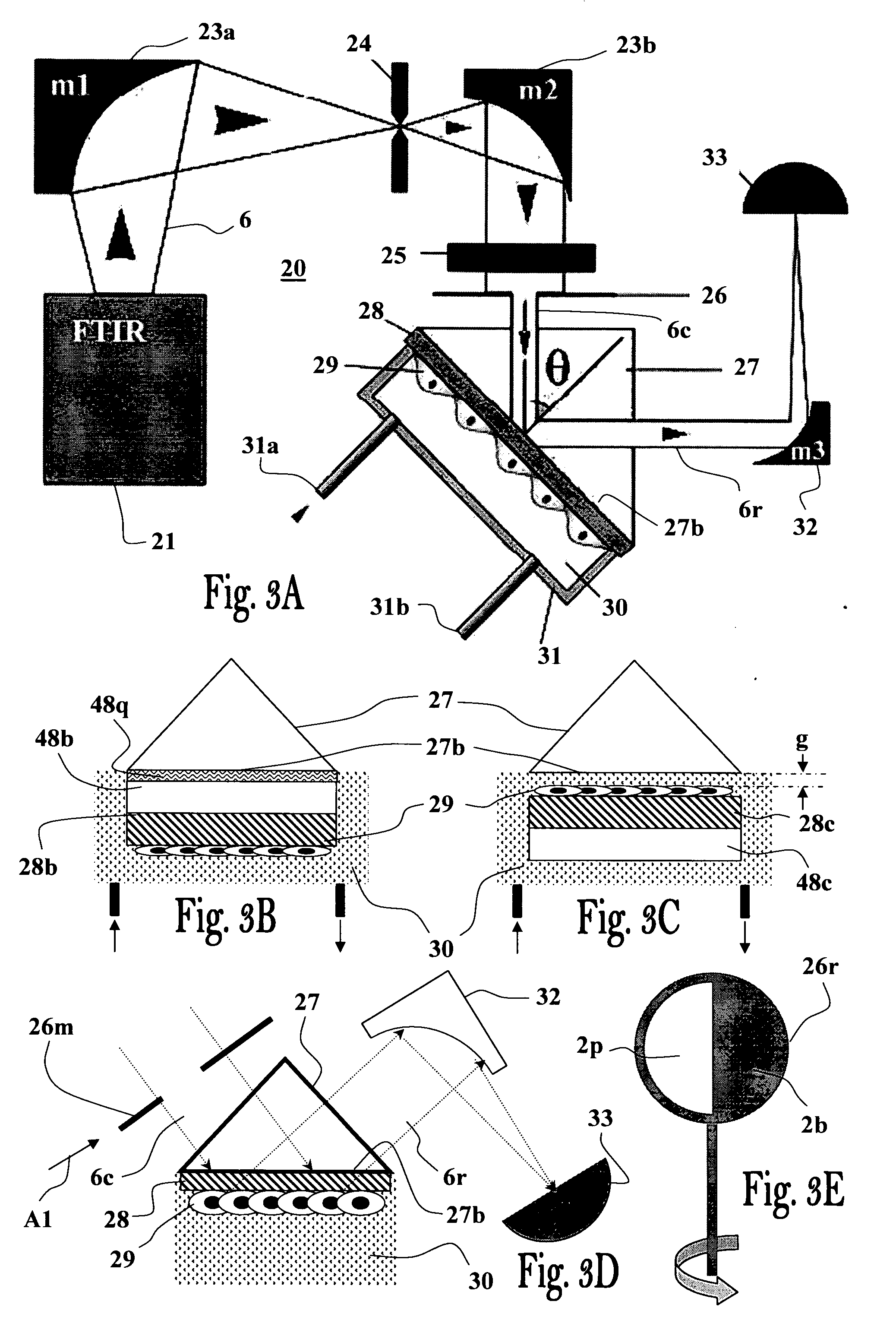Method and apparatus for monitoring processes in living cells
a living cell and process monitoring technology, applied in the field of surface plasmon resonance (spr) technique, can solve the problems of limiting the operation of visible and nir wavelengths, labeling can alter the physiological activity of interacting ligands, and the complexity of cells poses an enormous difficulty in evaluating the precise mod
- Summary
- Abstract
- Description
- Claims
- Application Information
AI Technical Summary
Benefits of technology
Problems solved by technology
Method used
Image
Examples
example 1
[0165]Real-time monitoring of transferrin-induced endocytic vesicle formation
Experimental Setup
[0166]Surface plasmon (SP) was excited using Kretchmann's geometry as illustrated in FIG. 3A employing the Bruker FTIR spectrometer (Equinox 55—Bruker Optik GmbH, Ettlingen, Germany) equipped with a KBr beam splitter as mid-IR source, and a right-angle ZnS prism having a 20×40 mm base (ISP Optics, Inc., Irvington, N.Y, US) coated with an 18-nm-thick gold film (electron-beam evaporation). Cells were cultured on the gold surface, as described below. The prism and cells were attached to a flow chamber mounted on a goniometer, in such way that the cells on the gold-coated base faced the flow chamber's volume (0.5 ml). The flow chamber was filled with cell culture medium, resulting in direct contact between the medium and the gold layer, or cells cultured on that layer. The medium was passed through the chamber at a constant flow rate (5 μl / min) during the entire experiment, using a motorized b...
example 2
[0189]The following examples provide several biological applications of the FTIR-SPR technique of the invention. The experimental setup is based on the setup shown in FIG. 3A, utilizing the Bruker Equinox 55 FTIR spectrometer with a tungsten lamp equipped with the KBr beam splitter as a light source. For the 1-mm-diameter pinhole, the beam diameter is about 3-4 mm and the beam divergence is Δθdiv=0.8°. The collimated beam passes through the grid polarizer (Specac, Ltd.) and is reflected from the right-angle ZnS prism (ISP Optics, Inc.) mounted on a θ-2θ rotating table. The additional parabolic mirror focuses the reflected beam on the liquid-nitrogen-cooled MCT (HgCdTe) detector. A temperature-stabilized flow chamber (with a volume of about 0.5 ml) is in contact with the gold-coated base of the prism. The gold film thickness is chosen according to the targeted wavelength (FIG. 17). To operate this setup, an appropriate incident angle was chosen. Then the sample was mounted and the re...
example 3
Glucose Uptake by Erythrocytes
[0192]In the following section measurements of glucose uptake by erythrocyte suspension in the PBS medium are described. Briefly, fresh human red blood cells (RBCs) were washed four times in PBS by centrifugation. The supernatant and buffy coat cells were discarded and RBCs were resuspended in glucose-free PBS to yield ce=5% v / v. For complete glucose depletion, cells were incubated for 60 min at 22° C. in PBS. Then, RBCs were centrifuged and resuspended in fresh PBS containing the required concentrations of D-glucose supplemented with L-glucose, to keep the total glucose concentration (osmolarity) equal to 20 mM. The SPR measurements were performed at 22° C. to slow down cellular glycolysis.
[0193]The measurements were performed using a ZnS prism coated with a 12-nm thick Au film. It was decided to operate the FTIR-SPR setup with λ=4 μm wavelength at which the surface plasmon penetration depth, δzd=4.5 μm (FIG. 20), is comparable to the typical erythrocy...
PUM
| Property | Measurement | Unit |
|---|---|---|
| wavelength range | aaaaa | aaaaa |
| thickness | aaaaa | aaaaa |
| thickness | aaaaa | aaaaa |
Abstract
Description
Claims
Application Information
 Login to View More
Login to View More - R&D
- Intellectual Property
- Life Sciences
- Materials
- Tech Scout
- Unparalleled Data Quality
- Higher Quality Content
- 60% Fewer Hallucinations
Browse by: Latest US Patents, China's latest patents, Technical Efficacy Thesaurus, Application Domain, Technology Topic, Popular Technical Reports.
© 2025 PatSnap. All rights reserved.Legal|Privacy policy|Modern Slavery Act Transparency Statement|Sitemap|About US| Contact US: help@patsnap.com



